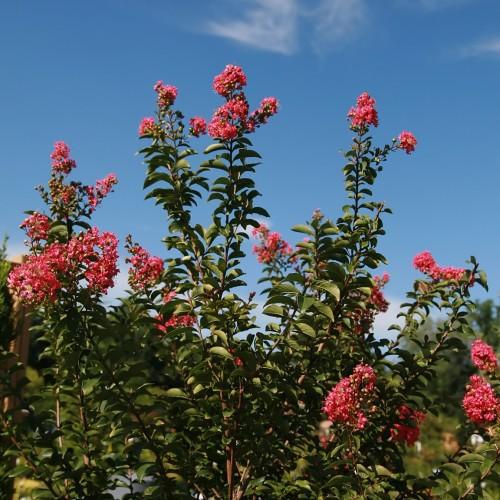
crape myrtle
Lagerstroemia 'Comanche'
Cycle:
Perennial
Watering:
Average
Hardiness Zone:
6 - 9
Flowers:
Flowers
Sun:
Full sun
Leaf:
Yes
Growth Rate:
High
Maintenance:
Moderate
Salt Tolerant:
Yes
Care Level:
Medium
watering
Crape myrtle (Lagerstroemia 'Comanche') should be watered deeply twice a week during the active growing season. Make sure soil remains moist, but not soggy. Allow the top 1 to 2 inches of soil to dry out between waterings. Water the roots of the plant (not the leaves), slowly and deeply to encourage deep root growth. Reduce watering to about once a week after the active growing season. During times of extreme heat, an extra watering every few days is beneficial.
sunlight
Crape myrtle (Lagerstroemia 'Comanche') should receive full sun from late spring through early fall for best flowering and growth. For the remainder of the year it should receive at least 4-6 hours of direct sunlight a day in order to maintain its health. In extreme temperatures, midday direct sunlight should be avoided. Too much light in the summertime can result in leaf burn, while in the winter, too much sun can dry out the plant.
pruning
Crape myrtles (Lagerstroemia 'Comanche') should be pruned in the early spring before they begin to leaf out. Start by removing any dead, diseased, broken, or crossed branches. Then selectively remove canes throughout the shrub to maintain the desired size and shape. Cut some of the canes back to their base to maintain the shrub's size and the density of the foliage and flowers. The crape myrtle can be pruned heavily if desired without risk of damaging the shrub.
